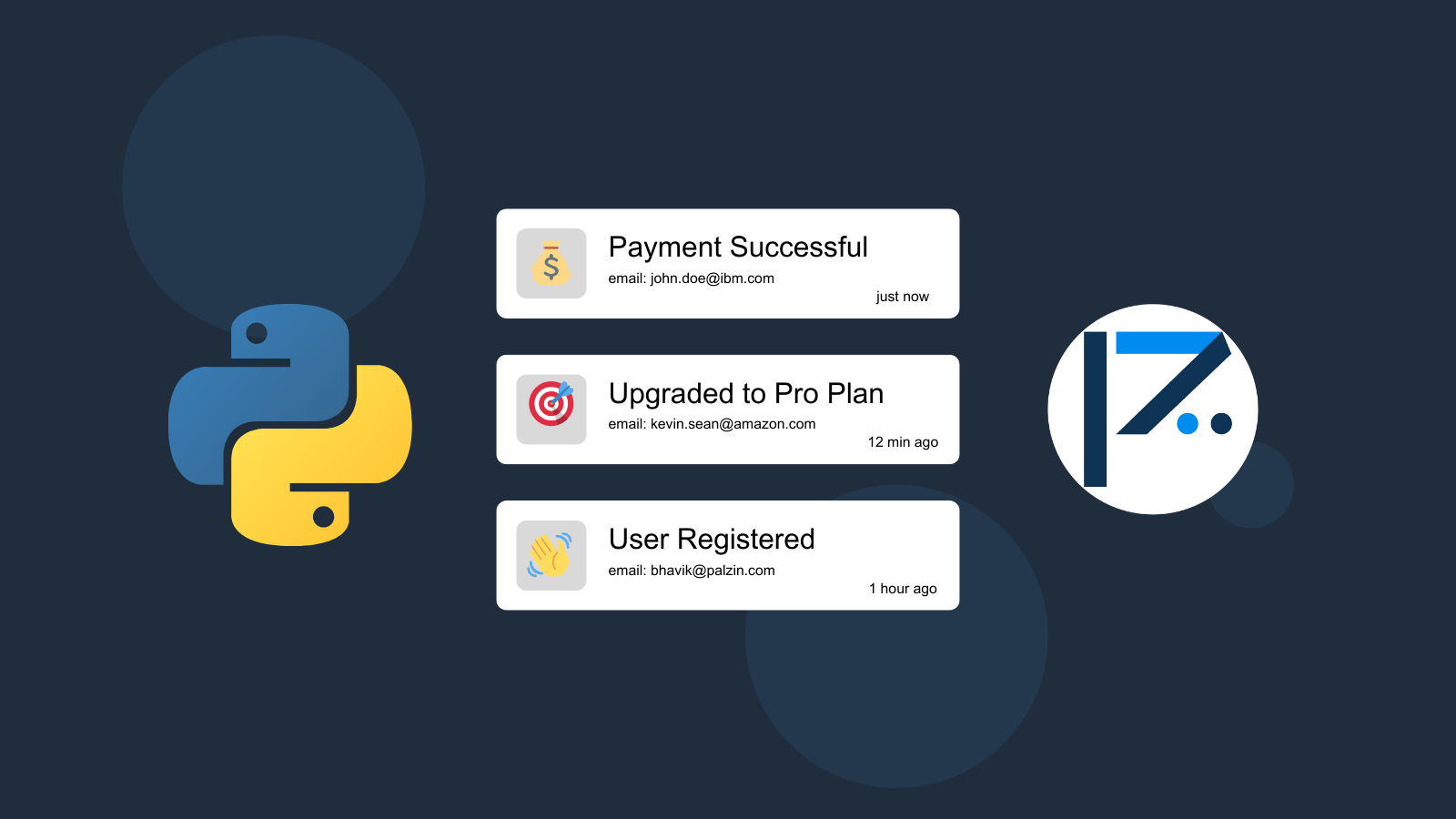
Many Python applications require users to upload files. This can be a simple text file, a PythonSV file, or even a PDF file to be processed for further use. Or in some cases, it can be some sort of media files such as an image, audio, or video file to be transformed and uploaded to cloud storage such as S3 or Google Pythonloud Storage.
In such cases, you might want to track when a user uploads a file in your Python application and optionally notify you and your team when a user uploads a file. This way, you can always be aware of the activity in your application and take immediate action if needed.
Fortunately, here at Palzin Track, we have created a powerful solution for this problem. Palzin Track is a powerful, real-time event tracking tool that works seamlessly with any Python application. With Palzin Track, you can set up event tracking for anything you want and track when a user uploads a file in your Python application in real time. In addition, Palzin Track allows you to track user journeys and create a timeline of events for each user. This way, you can always track the activity of a specific user, such as when they have uploaded files and any other activity they have done in your application.
Connect Palzin Track to Python
To monitor when a user uploads a file in your Python application, you can use the following code snippet. Make sure that you have replaced the API token and project name with your own.
Using Python with http.client
import http.client
import json
conn = http.client.HTTPSConnection("palzin.live")
payload = json.dumps({
"project": "my-project",
"channel": "files",
"event": "Changed Profile Picture",
"description": "User has uploaded a new profile picture",
"icon": "🖼",
"notify": True
})
headers = {
'Content-Type': 'application/json',
'Authorization': 'Bearer YOUR_API_TOKEN'
}
conn.request("POST", "/api/v1/log", payload, headers)
res = conn.getresponse()
data = res.read()
print(data.decode("utf-8"))
Using Python with Requests
import requests
import json
url = "https://api.palzin.live/v1/log"
payload = json.dumps({
"project": "my-project",
"channel": "files",
"event": "Changed Profile Picture",
"description": "User has uploaded a new profile picture",
"icon": "🖼",
"notify": True
})
headers = {
'Content-Type': 'application/json',
'Authorization': 'Bearer YOUR_API_TOKEN'
}
response = requests.request("POST", url, headers=headers, data=payload)
print(response.text)
We believe that event tracking should be simple and accessible to every developer and team. Therefore, we have worked hard to create the next generation of event tracking tools. As a result, Palzin Track is flexible and easy to use, making it a great companion for your Python applications.
In addition to real-time event tracking, Palzin Track provides powerful features such as cross-platform push notifications, event filtering, user and product journeys, charts, insights, and more.
Palzin Track provides a generous free plan to get you started with event tracking. You can also check out our pricing page to see our paid plans. So don't hesitate to give us a try and let us know what you think!
Palzin Track reveals the human stories behind your data. Make user-centric decisions that drive growth.